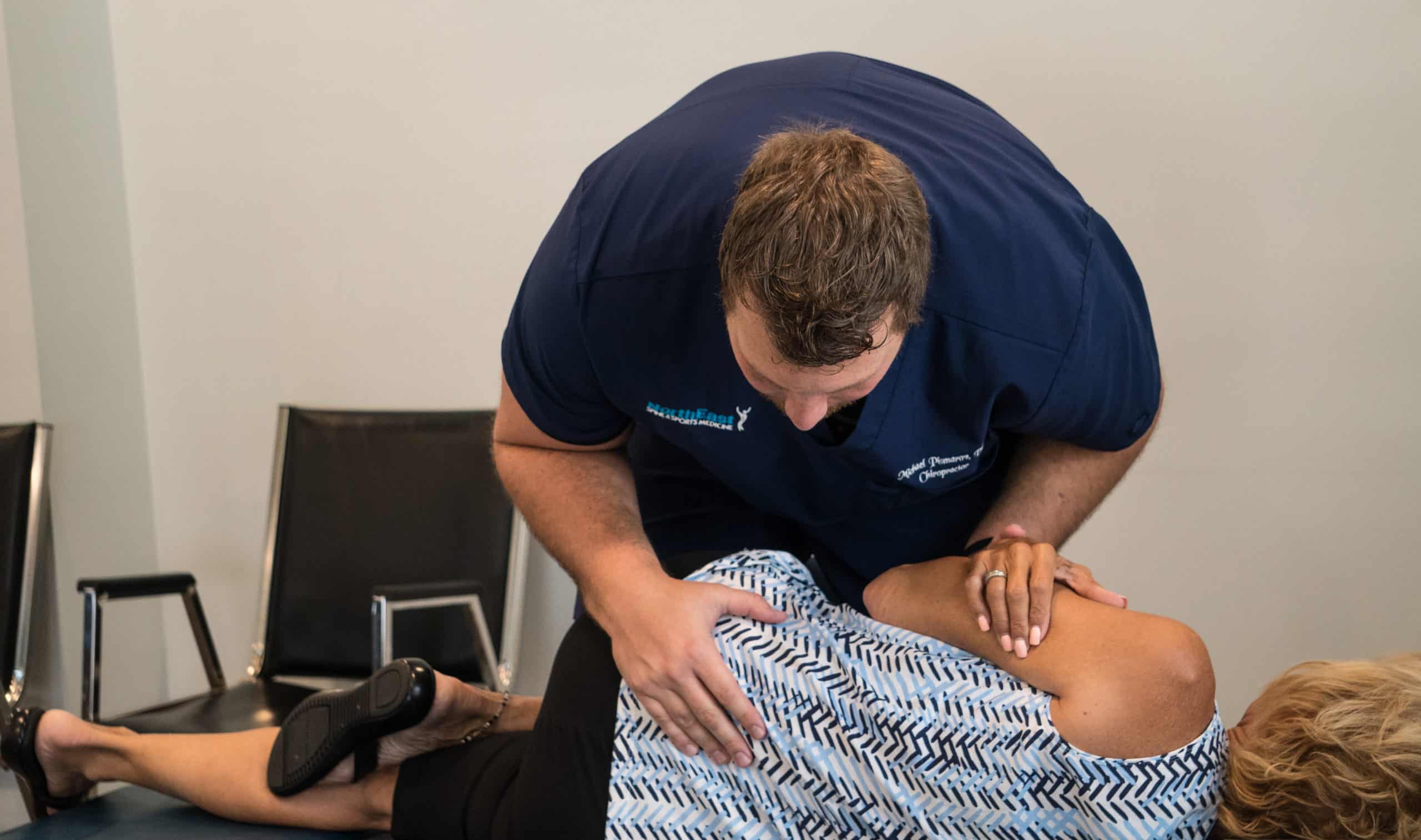Spinal manipulation
The National Center for Complementary and Integrative Health notes that spinal manipulation is one of the most common complementary health treatments for individuals in the United States. The practice of spinal manipulation actually dates back thousands of years to ancient Greece, and today, modern chiropractors and other providers treat patients with many methods of spinal adjustment. If you’re dealing with lower back pain or other wellness challenges, discover more about this method below to see if it might be right for you.


Spinal manipulation is a method by which a trained and licensed chiropractor, manipulates and adjusts areas of the spine. This may be done with the hands or with assistive devices. Typically, during the spinal manipulation, the joints within the spine are moved in a way they wouldn’t normally move on their own.
Another name for spinal manipulation is spinal manipulation therapy, or SMT.
How Does Spinal Manipulation Work?
During spinal manipulation, a chiropractor exerts thrust on a specific joint or area of the spine. The thrust is a force that must be in a certain direction and angle and with a specific level of strength to achieve the result desired. Depending on the goal of the spinal manipulation, chiropractors may use their hands or devices that help them apply more pressure or achieve a specific angle or direction.
During spinal manipulation, individuals might hear a cracking sound such as they might hear when they crack their knuckles. This isn’t the same thing, however, as “cracking your back.”
Are you a good candidate for Spinal manipulation?
-
Positive
You need help with sciatica, back pain, neck pain or headache.
-
Positive
You want to enhance your energy, immune functions, and overall wellness.
-
Negative
You have spine fractures, which could cause the procedure to be life-threatening.
-
Negative
You have conditions that may make the ligaments weak, such as rheumatoid arthritis or cancer.
Frequently asked questions
How Do You Prepare for Spinal Manipulation?
You usually don’t need to do anything special to prepare for a spinal manipulation. Your practitioner may want you to have X-rays or complete other screenings prior to your first spinal manipulation to ensure the treatment is as safe and effective as possible. And once you’re set up with your first appointment for spinal manipulation, you’ll receive necessary instructions to enhance that experience. Otherwise, it’s a good idea to wear loose, comfortable clothing.

How Effective Is Spinal Manipulation?
Data published in American Family Physician indicates that many patients have experienced benefits from spinal manipulation. Another study found that this treatment was as effective as other therapies often recommended for low back pain.
As with any health care treatment, everyone will have a unique experience. Whether spinal manipulation is effective for you depends on a wide range of factors, potentially including your overall health, how much effort you put into complementary efforts and what other symptoms or conditions you’re dealing with.
Spinal manipulation often works best when it’s part of a regimen that includes diligent adherence to recommended exercises, stretches, diet and other lifestyle changes. Other complementary practices, including massage and medication, may be combined with SMT to achieve a desired result.

How Long Does Spinal Manipulation Take?
Routine spinal manipulation or chiropractic adjustment visits take around 30 minutes on average. The first time you visit, however, your appointment may take longer. You’ll have to fill out paperwork, and the practitioner may have questions for you to help ensure they’re providing the most appropriate treatments.
Depending on the reason someone is getting SMT, the treatment may need to be repeated on a periodic basis. This may be true as long as someone is suffering from certain conditions, or spinal manipulations may only be required temporarily.

What Are Potential Side Effects of Spinal Manipulation?
While spinal manipulation is considered safe when performed by licensed, experienced chiropractor, it obviously is not a treatment that anyone should perform on themselves. Undergoing this treatment with a licensed practitioner who understands the spine substantially reduces the chances of a negative outcome, but as with any medical procedure, there are some potential side effects and risks to be aware of.
In very rare instances, damage to the arteries could occur during a certain type of spinal manipulation that treats the neck. This damage might lead to or increase the chances of a stroke. It’s rare to experience this type of issue with spinal manipulation, and it’s more likely to occur during a sports injury or another trauma that could cause whiplash.
Chiropractic treatment in general may be beneficial to some pregnant women, so it’s always a good idea to work closely with your treatment providers and ensure they’re aware of your condition so they can offer the most applicable advice about treatments.

What Is Recovery after Spinal Manipulation Like?
Following spinal manipulation — or any type of spinal adjustment — individuals may experience soreness within the first 24 to 48 hours. Rest, ice, heat, or over-the-counter pain relievers may all be appropriate, but patients should always follow practitioner guidance on caring for themselves following a spinal manipulation.

What Is Spinal Manipulation Used For?
Spinal manipulation and spinal decompression is primarily used for neck pain, lower back pain, headaches and sciatica. Most people turn to this treatment as a first resort to help mitigate back pain, especially when it’s in the lower back.
Other reasons people might seek out this treatment include:
- As part of an overall wellness regime
- To improve energy or functionality
- To enhance immune functions
- To help with sciatica, back pain, neck pain or headache
- As part of a complementary approach in treatment of specific diseases or conditions
Treatment providers may apply some clinical rules to evaluate whether spinal manipulation is a potential treatment method to be recommended. That includes evaluating the level of pain and how long it has lasted. Providers may also test functionality of various muscles and joints and ask about other symptoms before recommending SMT.

